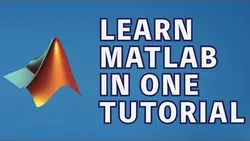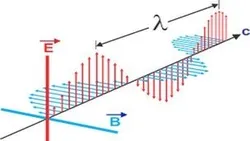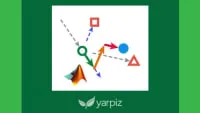
MATLAB Tutorial 
This MATLAB tutorial covers topics such as user input, variables and data types, casting, math and sprintf, math functions, conditionals, vectors, matrices, looping, matrix functions, cell arrays, strings, structures, tables, and file I/O. It provides an overview of the fundamentals of MATLAB programming. ▼
ADVERTISEMENT
Course Feature
![]() Cost:
Cost:
Free
![]() Provider:
Provider:
Youtube
![]() Certificate:
Certificate:
Paid Certification
![]() Language:
Language:
English
![]() Start Date:
Start Date:
On-Demand
Course Overview
❗The content presented here is sourced directly from Youtube platform. For comprehensive course details, including enrollment information, simply click on the 'Go to class' link on our website.
Updated in [February 21st, 2023]
1. User Input: Learners can gain knowledge on how to use MATLAB to receive user input from the command line, and how to use the input to control the flow of the program.
2. Variables / Data Types: Learners can understand the different types of data that can be used in MATLAB, and how to store and manipulate them. They can also learn how to convert between different data types.
3. Math / Sprintf: Learners can learn how to use MATLAB to perform basic mathematical operations, such as addition, subtraction, multiplication, and division. They can also learn how to use the sprintf function to format strings.
4. Math Functions: Learners can learn how to use MATLAB to perform more complex mathematical operations, such as trigonometric functions, exponential functions, and logarithmic functions.
5. Conditionals: Learners can learn how to use MATLAB to create conditional statements, such as if-else statements and switch statements, to control the flow of the program.
[Applications]
After completing this MATLAB Tutorial, users can apply their knowledge to a variety of tasks. These tasks may include creating data visualizations, performing numerical calculations, and developing algorithms. Additionally, users can use MATLAB to create custom functions, automate tasks, and develop graphical user interfaces. Furthermore, users can use MATLAB to develop applications for data analysis, signal processing, image processing, and machine learning.
[Career Paths]
1. Data Scientist: Data Scientists use MATLAB to analyze and interpret data, develop predictive models, and create visualizations. They are responsible for understanding the data, developing algorithms, and creating reports and presentations. With the increasing demand for data-driven decision making, the demand for Data Scientists is expected to grow significantly in the coming years.
2. Software Engineer: Software Engineers use MATLAB to develop software applications and systems. They are responsible for designing, coding, testing, and debugging software applications. With the increasing demand for software applications, the demand for Software Engineers is expected to grow significantly in the coming years.
3. Machine Learning Engineer: Machine Learning Engineers use MATLAB to develop machine learning algorithms and models. They are responsible for understanding the data, developing algorithms, and creating reports and presentations. With the increasing demand for machine learning applications, the demand for Machine Learning Engineers is expected to grow significantly in the coming years.
4. Robotics Engineer: Robotics Engineers use MATLAB to develop robotic systems and applications. They are responsible for designing, coding, testing, and debugging robotic systems. With the increasing demand for robotics applications, the demand for Robotics Engineers is expected to grow significantly in the coming years.
[Education Paths]
1. Bachelor of Science in Computer Science: This degree path focuses on the fundamentals of computer science, such as programming, algorithms, data structures, and software engineering. It also covers topics such as artificial intelligence, computer graphics, and computer networks. With the increasing demand for software development and data analysis, this degree path is becoming increasingly popular.
2. Bachelor of Science in Software Engineering: This degree path focuses on the development of software applications and systems. It covers topics such as software design, software testing, software architecture, and software project management. With the increasing demand for software development, this degree path is becoming increasingly popular.
3. Master of Science in Computer Science: This degree path focuses on advanced topics in computer science, such as artificial intelligence, computer networks, and computer graphics. It also covers topics such as software engineering, software design, and software testing. With the increasing demand for software development and data analysis, this degree path is becoming increasingly popular.
4. Master of Science in Software Engineering: This degree path focuses on the development of software applications and systems. It covers topics such as software design, software testing, software architecture, and software project management. With the increasing demand for software development, this degree path is becoming increasingly popular.
Course Provider

Provider Youtube's Stats at AZClass
Discussion and Reviews
0.0 (Based on 0 reviews)
Explore Similar Online Courses

Knit Faster With Combination Knitting
![[Classic] ImageNet Classification with Deep Convolutional Neural Networks (Paper Explained)](/ccsimg/td_book/check/eebe415c184e4a867ae97ae7c670e581.webp)
[Classic] ImageNet Classification with Deep Convolutional Neural Networks (Paper Explained)

Python for Informatics: Exploring Information

Social Network Analysis

Introduction to Systematic Review and Meta-Analysis

The Analytics Edge

DCO042 - Python For Informatics

Causal Diagrams: Draw Your Assumptions Before Your Conclusions

Whole genome sequencing of bacterial genomes - tools and applications

Introduction to Data Signal and Image Analysis with MATLAB

Electromagnetic Tutorials part 1 with MATLAB & GeoGebra


Start your review of MATLAB Tutorial